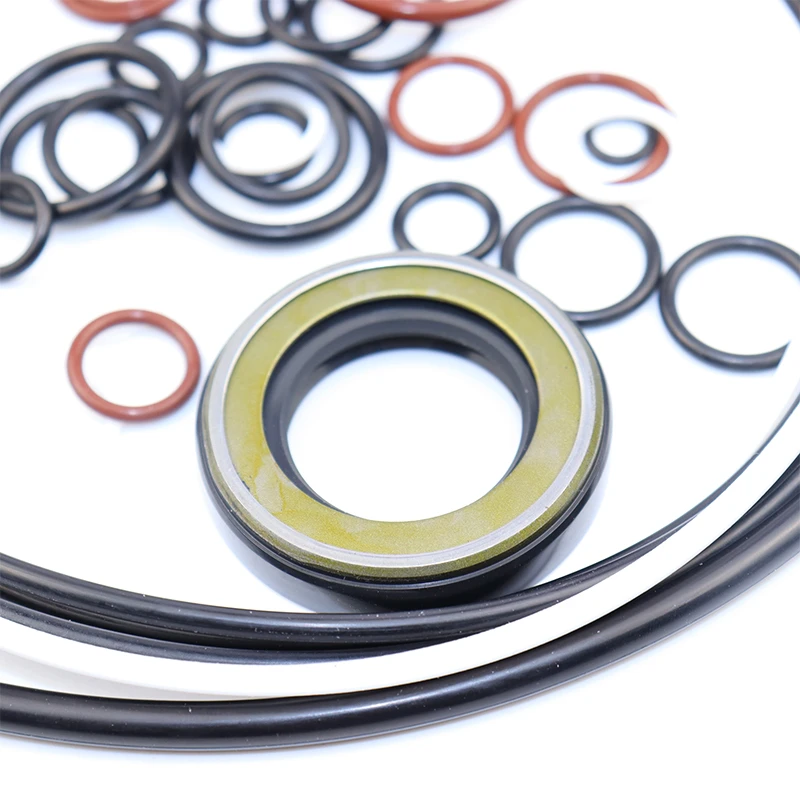9 月 . 21, 2024 19:54 Back to list
forklift hydraulic cylinder seals
Understanding Forklift Hydraulic Cylinder Seals
Forklifts are invaluable machines in modern industrial settings, playing a crucial role in material handling and logistics. At the heart of a forklift's lifting mechanism is the hydraulic system, which relies heavily on hydraulic cylinders to perform tasks efficiently. However, the performance and safety of hydraulic cylinders are significantly influenced by the quality of their seals. This article delves into the importance of forklift hydraulic cylinder seals, their types, maintenance, and selection criteria.
The Importance of Hydraulic Cylinder Seals
Hydraulic cylinder seals are designed to prevent fluid leaks, ensuring that the hydraulic system maintains pressure during operation. A well-functioning seal allows for smooth movement of the forklift’s lifting arms, enhancing its ability to lift and lower loads with precision. When seals fail, the efficiency of the hydraulic system deteriorates, leading to reduced performance and potential operational hazards. This not only affects productivity but can also lead to costly repairs and downtime.
Types of Hydraulic Cylinder Seals
There are several types of seals used in hydraulic cylinders, each serving a specific purpose
1. Rod Seals These seals prevent hydraulic fluid from leaking out of the cylinder as the piston rod moves in and out. They are critical for maintaining pressure and ensuring efficient operation.
2. Piston Seals These seals ensure that the hydraulic fluid does not bypass the piston within the cylinder. They enable the cylinder to generate sufficient force, which is essential for lifting heavy loads.
forklift hydraulic cylinder seals

3. Wipers Wiper seals prevent dirt, dust, and other contaminants from entering the cylinder. Keeping the hydraulic fluid clean is essential for the longevity of the seals and the hydraulic system as a whole.
4. Backup Rings These rings are used in conjunction with other seals to provide additional support, preventing extrusion under high pressure.
Maintenance of Hydraulic Cylinder Seals
Regular maintenance is vital for ensuring the longevity of hydraulic cylinder seals. Operators should routinely inspect seals for signs of wear or damage, such as cracks, tears, or deformation. Moreover, they should monitor for fluid leaks, as these can indicate seal failure. Maintaining proper hydraulic fluid levels and using the correct type of fluid also contribute to seal health. Additionally, regular cleaning of the rod and cylinder can prevent contaminants from causing premature wear.
Selecting the Right Seals
When choosing hydraulic cylinder seals for forklifts, several factors need to be considered. Compatibility with hydraulic fluids, operating temperature, pressure conditions, and the specific application of the forklift are all critical in selecting the appropriate seal. It's also advisable to consult with manufacturers or experts to ensure that the right materials and designs are chosen for specific forklift models and their intended tasks.
Conclusion
In conclusion, hydraulic cylinder seals are a small yet critical component of a forklift’s hydraulic system. Understanding their function, maintaining them, and choosing the right seals can significantly enhance the performance and reliability of forklifts. By ensuring that hydraulic cylinder seals are in optimal condition, operators can maximize efficiency and minimize downtime in their operations, ultimately leading to a more productive work environment.
-
The Power of Advanced Sealing: High-Pressure Solutions for Modern Machinery
NewsOct.29,2024
-
Optimizing Machinery with High-Performance Oil Seals
NewsOct.29,2024
-
Maximizing Machinery Efficiency with Advanced Oil Seals
NewsOct.29,2024
-
Ensuring Equipment Longevity with Quality Oil Seals
NewsOct.29,2024
-
Enhance Equipment Performance with Quality Oil Seals
NewsOct.29,2024
-
Custom Oil Seals for Specialized Machinery Needs
NewsOct.29,2024
-
The Role of Wiper Seals in Dust Sealing and Oil Protection
NewsOct.20,2024
Products categories
















